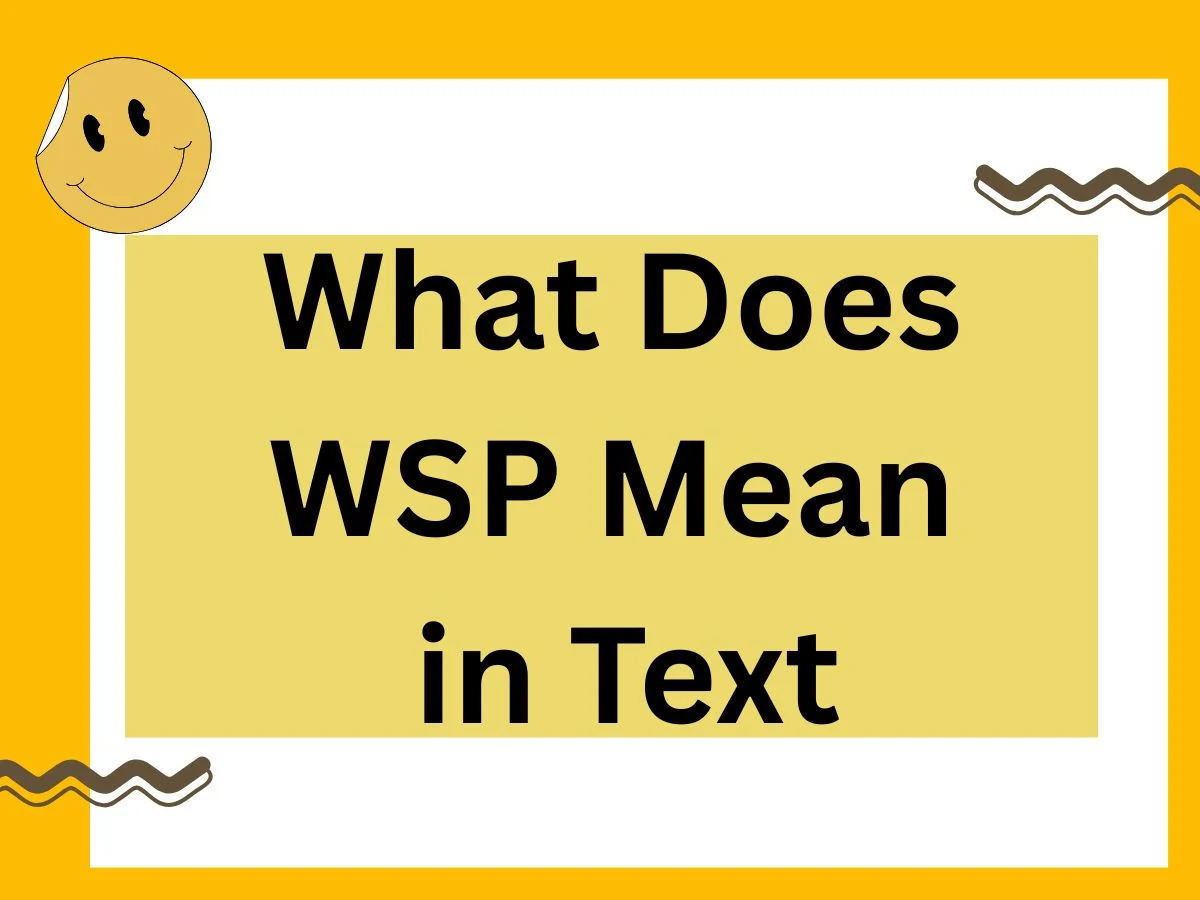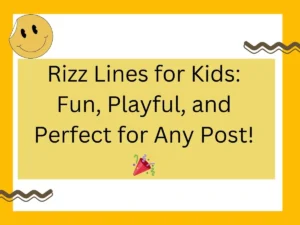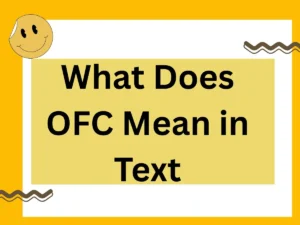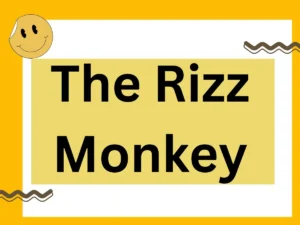If you’ve ever opened your phone to see a quick “WSP?” from a friend, coworker, or even a stranger in a group chat, you’ve already encountered one of modern texting’s most compact and versatile phrases. But while many people think they know what “WSP” means, there’s far more to unpack — especially in 2025, where texting language continues to evolve at breakneck speed.
🔥 Rizz Line Generator 🔥
This guide isn’t just going to give you the basic answer.
We’ll dive into:
- The exact meaning of WSP in various contexts
- Its linguistic evolution from early chat rooms to today’s short-form culture
- Regional and generational differences in interpretation
- Nuances of tone (how “WSP?” can mean friendly, flirty, casual, or confrontational)
- When NOT to use it and why it can backfire
- 10 advanced alternatives to “WSP” that fit different moods and situations
- New 2025 texting trends that influence phrases like “WSP”
- Real-life examples to help you choose the right wording every time
Let’s start with the core meaning.
The Core Meaning of WSP in Text
WSP stands for “What’s up?” — a common greeting in digital communication used to ask how someone is doing or what they are currently doing.
Primary Function
- Greeting – Similar to “Hi” or “Hey,” but with an added request for information about the person’s current state or activity.
- Conversation Starter – Often used to initiate casual chats without a specific topic in mind.
- Check-in – A quick way to reconnect after a gap in communication.
Example:
Alex: “WSP?”
Jamie: “Not much, just relaxing. You?”
A Brief History: From “What’s Up?” to WSP
Texting abbreviations like WSP didn’t appear overnight. They evolved from decades of linguistic compression in digital spaces.
- Early 2000s – People mostly typed full “What’s up?” in instant messaging apps like MSN or AOL.
- Mid-2000s – Shortened “Sup?” became popular among younger users, thanks to SMS character limits.
- 2010–2015 – Online gaming chats and Snapchat popularized WSP as an even quicker, more minimal version.
- 2020–2025 – WSP remains common in texting but has also picked up nuanced meanings in niche online communities.
The Nuances of WSP in 2025
Here’s where things get interesting. WSP isn’t always neutral — it can shift meaning depending on tone, relationship, and context.
1. Friendly
When sent between friends, WSP is a warm, casual greeting.
- Tone: Light, open.
- Example: “WSP! Haven’t heard from you all week.”
2. Flirty
In dating app chats, WSP can be a soft opener.
- Tone: Playful, casual.
- Example: “WSP 😉” signals mild romantic interest.
3. Passive or Uninvested
If used with no punctuation or follow-up, it can feel lazy.
- Tone: Disinterested.
- Example: “Wsp” (lowercase, no question mark) might signal minimal effort.
4. Group Check-In
Used to address multiple people at once.
- Example: “WSP everyone? What’s the plan tonight?”
Why Context Matters
Two people can send “WSP” and mean completely different things. Context factors include:
- Sender-Receiver Relationship (friends, romantic, coworker)
- Platform (Snapchat vs. LinkedIn)
- Current Conversation Flow
- Accompanying Emojis or Punctuation
Example:
- “WSP 😁” — friendly energy.
- “WSP.” — curt, possibly annoyed.
- “WSP???” — urgent or impatient.
When You Should Avoid Using WSP
While casual, WSP isn’t always the right choice.
- Professional settings – Instead of “WSP,” use “How are you?” or “Hope you’re doing well.”
- First-time introductions – WSP can feel too abrupt.
- When tone could be misread – Without vocal cues, brevity can be mistaken for disinterest.
The 2025 Cultural Layer: How WSP Differs Around the World
In global communication, abbreviations like WSP aren’t universally understood.
- United States & Canada – Widely recognized among younger demographics.
- UK & Australia – More common is “Sup?” but WSP is growing.
- Asia – English speakers may use it in gaming communities, but local equivalents are preferred.
- Middle East – Some interpret WSP as “WhatsApp,” not “What’s up?”
10 Superior Alternatives to WSP (with Context)
If you want to avoid the sometimes bland “WSP,” here are richer options that carry more personality. Each works best in different scenarios.
1. “How’s everything going?”
- Tone: Friendly, caring.
- Best for: Checking in with friends or colleagues.
- Example: “Hey, how’s everything going? Haven’t caught up in a while.”
2. “What’s new with you?”
- Tone: Curious, conversational.
- Best for: Reconnecting after some time apart.
3. “How’s your day treating you?”
- Tone: Warm, empathetic.
- Best for: Personal chats where you want to sound genuine.
4. “Anything exciting happening today?”
- Tone: Playful.
- Best for: Light banter with friends or romantic interests.
5. “How are you holding up?”
- Tone: Supportive.
- Best for: When the other person might be stressed or busy.
6. “Fill me in—what’s going on?”
- Tone: Engaging.
- Best for: Friends you regularly exchange stories with.
7. “Hey, what’s on your agenda?”
- Tone: Curious.
- Best for: Morning check-ins.
8. “Hope your day’s going well—what’s up?”
- Tone: Polite.
- Best for: Semi-formal contexts.
9. “What are you working on?”
- Tone: Professional-friendly.
- Best for: Work-related catch-ups.
10. “Got a minute to chat?”
- Tone: Direct, respectful.
- Best for: When you want to start a real conversation, not just small talk.
The Future of Abbreviations Like WSP
In 2025, the shift toward AI-driven predictive texting and context-based messaging apps is changing how short forms are used.
- Predictive AI often replaces abbreviations with full sentences for clarity.
- Voice-to-text is reducing the need for ultra-short phrases.
- Hybrid texting styles mix abbreviations with emojis to convey tone more clearly.
Key Takeaways
- WSP = “What’s up?” — a versatile, casual greeting.
- Meaning shifts with tone, punctuation, and context.
- It’s best avoided in professional or highly formal exchanges.
- There are richer alternatives that can make your messages more engaging.
- In 2025, AI, emojis, and cultural differences shape how abbreviations like WSP are used.





